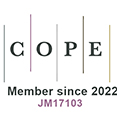REFERENCES
1. Banerjee I, Pangule RC, Kane RS. Antifouling coatings: recent developments in the design of surfaces that prevent fouling by proteins, bacteria, and marine organisms. Adv Mater 2011;23:690-718.
2. Chen M, Zhu D, Pang W, Chen Q. An effective strategy for distributed unmanned underwater vehicles to encircle and capture intelligent targets. IEEE T Ind Electron 2024;71:12570-80.
3. Xu F, Zou ZJ, Yin JC, Cao J. Identification modeling of underwater vehicles’ nonlinear dynamics based on support vector machines. Ocean Eng 2013;67:68-76.
5. Huajun Z, Xinchi T, Hang G, Shou X. The parameter identification of the autonomous underwater vehicle based on multi-innovation least squares identification algorithm. Int J Adv Robot Syst 2020;17:1729881420921016.
6. Ahmed F, Xiang X, Jiang C, Xiang G, Yang S. Survey on traditional and AI based estimation techniques for hydrodynamic coefficients of autonomous underwater vehicle. Ocean Eng 2023;268:113300.
7. Wang D, Wan J, Shen Y, Qin P, He B. Hyperparameter optimization for the LSTM method of AUV model identification based on Q-learning. J Mar Sci Eng 2022;10:1002.
8. van de Ven PWJ, Johansen TA, Sørensen AJ, Flanagan C, Toal D. Neural network augmented identification of underwater vehicle models. IFAC Proc Vol 2004;37:263-8.
9. Chocron O, Vega EP, Benbouzid M. Dynamic reconfiguration of autonomous underwater vehicles propulsion system using genetic optimization. Ocean Eng 2018;156:564-79.
10. Cardenas P, de Barros EA. Estimation of AUV hydrodynamic coefficients using analytical and system identification approaches. IEEE J Oceanic Eng 2020;45:1157-76.
11. Lin M, Yang C, Li D. Hybrid strategy based model parameter estimation of irregular-shaped underwater vehicles for predicting velocity. Robot Auton Syst 2020;127:103480.
12. Prawin J, Rao ARM, Lakshmi K. Nonlinear parametric identification strategy combining reverse path and hybrid dynamic quantum particle swarm optimization. Nonlinear Dynam 2016;84:797-815.
13. Sun B, Pang W, Chen M, Zhu D. Development and experimental verification of search and rescue ROV. Intell Robot 2022;2:355-70.
14. Zhou G, Xiang X, Liu C. Parameter identification and model prediction path following control of underactuated AUV: methodology and experimental verification. Control Eng Pract 2023;141:105729.
15. Hong L, Fang R, Cai X, Wang X. Numerical investigation on hydrodynamic performance of a portable AUV. J Mar Sci Eng 2021;9:812.
16. Bentes C. Modeling of an autonomous underwater vehicle. 2016. Available from: https://api.semanticscholar.org/CorpusID:198363077. [Last accessed on 25 Jun 2024].
17. Wang C, Zhang F, Schaefer D. Dynamic modeling of an autonomous underwater vehicle. J Mar Sci Technol 2015;20:199-212.
18. Bao H, Zhu H. Modeling and trajectory tracking model predictive control novel method of AUV based on CFD data. Sensors 2022;22:4234.
19. Li J, Wang Y, IV T, Di F. Model identification method of intervention AUV system based on numerical simulation. In: Second International Conference on Mechanical Design and Simulation (MDS 2022); Wuhan, China. pp. 953-69.
21. Luo YH, Wu JM, Zhou HF. Trajectory tracking control of underwater vehicle based on hydrodynamic parameters calculated by CFD. Chin J Ship Res 2022;17:237-45,272.









